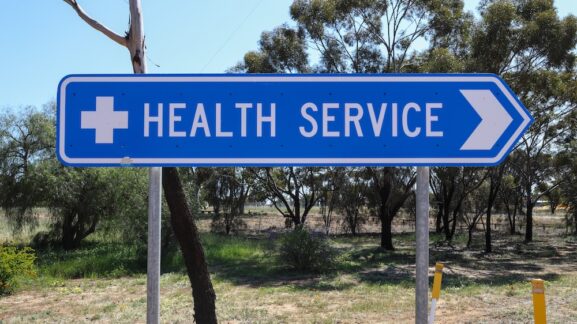Heaven and Hell: Psychedelics and the ‘Gift of Trauma’
If you’ve been to the depths, what’s next? Dr. Edith Shiro has an idea. A fresh perspective on psychedelics, trauma, and recovery.
Born in Venezuela, she moved to the United States as a first-generation immigrant “carrying a lot of stories of trauma from my ancestors,” she says. Her paternal grandparents were refugees from Syria, while her maternal grandparents had narrowly survived the Holocaust and lost their entire families in concentration camps. By all rights, the people around her should’ve collapsed. Given up. Thrown in the towel. They should’ve had post-traumatic stress disorder, and been more likely to die by suicide.
The psychologist says she learned a lesson from them: the people who thrived embraced their trauma. Those who struggled viewed their trauma as something they could never come back from.
RELATED: Researchers: The Focus on Mystical Experiences is Holding Psychedelic Therapy Back
Trauma as Life Sentence
Thanks to the psychologization of modern discourse—I’m looking at you, social media—we’re more familiar than ever with words like trauma. Many of the concepts we see cannibalized for Instagram and TikTok come from books like Bessel Van der Kolk’s The Body Keeps the Score and Gabor Maté’s more recent The Myth of Normal, which discuss the relationship between trauma and our bodies.
Trauma, especially post-traumatic stress disorder, has been a major focus in the psychedelic renaissance, driving clinical research by the Multidisciplinary Association for Psychedelic Studies (MAPS) and other organizations. In the context of therapy, trauma is sometimes viewed as something to overcome or to get rid of, with psychedelics like MDMA, ketamine and psilocybin being positioned as medicines that can aid us in that process. For most of us, it’s not until after we overcome our trauma that we can look at it as a gift.
In a new book, Dr. Shiro proposes that adopting a new perspective of our trauma–embracing it as an opportunity for growth rather than a diagnosis to overcome–can facilitate healing and transformation (with or without psychedelics). It’s one that lends itself to the psychedelic-assisted therapy model, and could aid both clients and therapists in how they prepare for and integrate their sessions.
RELATED: The Alleged “Ketamine Queen” Says She Never Met Matthew Perry
Radical Acceptance of Our Sorrows
Growing up, Shiro witnessed people in her community respond to their trauma in different ways. Some struggled, some did well, and a few, including her grandfather, seemed to thrive. “Their families had been killed, they were orphaned, and yet here they were, creating a new family, appreciating life, and being very spiritually connected,” she says.
This was Shiro’s first exposure to what she calls posttraumatic growth, a concept she has been interested in ever since, and one she first wrote about 25 years ago as part of her doctoral dissertation. It’s also the approach to trauma covered in her new book, The Unexpected Gift of Trauma: The Path to Posttraumatic Growth.
“[Posttraumatic growth] is something that I’ve always been looking at because I grew up in a community of Holocaust survivors, refugees, and immigrants,” says Shiro, who lives in Miami. “In the U.S., I’m Latina; in Venezuela, I’m European, and in New York, I’m Jewish. These identities are all part of who I am, and it made me always question: can people adapt? How do people survive? How do people make it?”

Adopting a New Narrative on Afflictions
While it might be hard to imagine traumatic experiences as gifts, “trauma can be used as a trampoline that bounces you forward to the next level,” says Shiro.
It’s something she has seen repeatedly throughout her career, working with Cambodian refugees who survived the genocide of the late 1970s, spouses and family members of people who died during the 9/11 attacks in New York City. More recently, she worked with a teenager who was the only one of his friends to survive a school shooting.
“They kept telling me these stories of posttraumatic growth. They’d say, ‘This is not something I’d wish on myself or anybody, but I’m so grateful that I’ve had this experience because I would not be who I am today without it,” she says. This sentiment “gets repeated over and over and over” by her patients.
In The Unexpected Gift of Trauma, Shiro proposes a five-stage framework for cultivating posttraumatic growth. They’re like the five stages of grief, Shiro says. And what’s important about them is that they provide a language to discuss what people are experiencing as they heal, grow, and expand.

Integrating Psychedelics and Trauma
Like many therapists who work with psychedelics and trauma, Dr. Shiro stresses the importance of integration, or “doing the work.”
“The message I want to share with people is that there is a process here. [Trauma] is an experience you can come out of,” she says–but not without first integrating the experience. This can be done in a variety of ways, says Shiro. It can be therapy, but it doesn’t have to be. “It can be psychedelics, it can be going on a yoga retreat for a year, it doesn’t really matter, as long as you do what resonates with you.”
On stage at the Cannadelic conference in Miami in February 2023, Shiro spoke of how her approach to trauma and psychedelic-assisted psychotherapy could make a potent pair.
“I believe that… when you’re really incorporating the psychedelic treatment within the context of therapy, and with integration, you really see all the stages of creating a new narrative: integrating your trauma into your life, understanding there is a new purpose and meaning to your life, relating to yourself and to others with much more compassion and understanding, and really connecting in a way you weren’t connected before,” she said during the panel on psychedelics, trauma, and spirituality (which I moderated).
When we’re able to reframe it, trauma offers an opportunity for increased awareness and consciousness, and an increased capacity for life, says Shiro. “In some ways, the lower you go, the higher you go. When you really allow yourself to break, more light comes in. And if you’ve tolerated a lot of darkness, you can tolerate a lot of light.”
Shiro says her book “is for everybody that identifies with some small-t or big-T trauma, and anybody who wants to understand more about overcoming individual, intergenerational and collective trauma.” But she clarifies: “This is not a book about trauma. This is a book about hope. It’s about what happens after trauma, and what it shows is that there is a light at the end of the tunnel—that it’s not a life sentence.”



